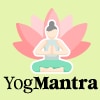Last Updated:
Yoga Mudra is the symbol of Yoga and involves gentle stretching, coordinated breathing, and bowing deep with a feeling of humility and surrender, making it the perfect therapeutic Asana for both body and mind
Yoga Mudra is one of the important practices in Yoga and can be done in any meditative pose. (Credit: https://cmdashboard.mn.gov.in/)
The purpose of Asanas, according to ancient Yoga texts, is to strengthen the body, while the purpose of Mudras is to steady the body, deepen concentration and help cultivate a certain state of mind. Yoga Mudra — also known as Yogamudrasana — is a forward-bending practice that combines both Asana and Mudra.
As a posture, Yoga Mudra stretches and exercises muscles such as extensors of the vertebral column, hip abductors, flexors, medial rotators, knee flexors, and shoulder girdle retractors, as per Cyclopedia Yoga*. The posterior stretch of the spine benefits all systems of the body; besides, circulation to the head, neck and back improves, and belly fat gets reduced.
As a Mudra, this practice has a quieting effect on the mind. It creates stability and relaxation. Done with a feeling of humility and ‘letting go’, it helps cultivate surrender to the will of the Absolute. According to Swami Sivananda, the great yoga guru of yore, this pose helps to awaken the Kundalini shakti.
Yoga Mudra is one of the important practices in Yoga and can be done in any meditative pose such as Sukhasana, Padmasana, Vajrasana and Bhadrasana. If the side variations of the practice are to be included, Sukhasana or Padmasana are more suitable. The movements along with the rhythmic breathing, where inhalation and exhalation counts are equal and the retention count is double those, create comfort. It can help release stiffness, uneasiness, tensions — and even detrimental attitudes that hold us back.
BEND AND RELEASE SUFFERING
Release stress of the back. Much of the stress that we hold gets stored in our backs. Plus, our backs also take the strain of work — from prolonged sitting, underuse of muscles, and also their overuse. This pose helps to relieve back pain and stiffness caused by any of these.
Release abdominal tension during menstruation. The forward bend can provide relief in menstrual pain and also ease menopausal symptoms. Vajrasana or the Thunderbolt pose should be the starting position in such cases. The abdomen gets a good compression and in the relaxed state in the final position, all the tension of the abdominal region is released.
Relieve Constipation. It’s interesting to note that popular self-help and motivational author Louise Hay, in her book ‘You Can Heal Your Life’, correlates the issue of constipation to the thinking pattern “Refusing to release old ideas and being stuck in the past”. Yoga Mudra is considered one of the best poses for removing constipation as it causes a deep pressure on both ascending and descending parts of the colon. The abdominal compression provides a massage and enhanced circulation to all organs of digestion. This pose is helpful in all kinds of gastric trouble. For deep abdominal compression, perform Yoga Mudra in Padmasana, the Lotus pose.
GIVE IN TO GRAVITY FOR NEUROMUSCULAR RELAXATION
Release Anger and Tension. Regular practice of Yoga Mudra helps to master the mind. When the practitioner is able to hold on to the pose for a longer time and achieves steadiness, Yoga Mudra brings in tranquility, which helps relieve anger and tension.
Let go. To advance and deepen the Yoga practice, allow the body to give in to gravity, rather than force it to bend. For even greater benefits, consciously add feelings of ‘letting go’, humility and surrender when bending forward. It now becomes a Relaxation practice.
Surrender and relax. According to Yoga Gurus Dr Jayadeva Yogendra and Dr Hansaji Yogendra of The Yoga Institute Santacruz, performing Yoga Mudra with feeling helps in cultivating an attitude of faith in the benevolent Higher Reality. “We resign to the will of the Absolute, and that brings about surrender and then detachment. It is only when you surrender everything can knowledge and wisdom come. With that wisdom, you can manage your life,” they have stated.
HOW TO DO YOGA MUDRA
The Steps:
Sit in Padmasana, Sukhasana or Vajrasana. Breathe normally and keep the head, neck and torso erect but relaxed.
Move the arms behind the back and clasp the left wrist with the right hand. Inhale deeply.
Breathing out, bend forward while arching the spine, to touch the floor with the forehead.
Keep the shoulders relaxed and arms relaxed in this position. Stay there with normal breathing as long as comfortable (or suspend your breath, if you can, for double the inhalation-exhalation count).
Breathing in, raise the head and torso and return to the upright starting position.
Next, while exhaling, twist your body above the waist to the right and bend down gently to touch your forehead to the right knee; inhaling, return to the upright position.
Repeat on the left side in the same way.
This completes one round.
Do three rounds of the practice.
Remember, inhalation and exhalation must be equalised.
Please note:
1. This article is meant for information. Always consult your physician before starting any exercise.
2. Those with hypertension and other serious cardiac conditions, as well as spinal injuries, slipped disc, acute back pain, spondylitis and other spine and back problems may avoid this practice. A protruding belly may make it uncomfortable to bend down.
*CYCLOPAEDIA YOGA Vol I – With Special Information on Asana; ed. Dr Jayadeva Yogendra, The Yoga Institute, Santacruz, Mumbai (1988, first edition)
The author is a journalist, a cancer-warrior since 19 years, and a certified yoga teacher. She can be reached at swatikamal@gmail.com



